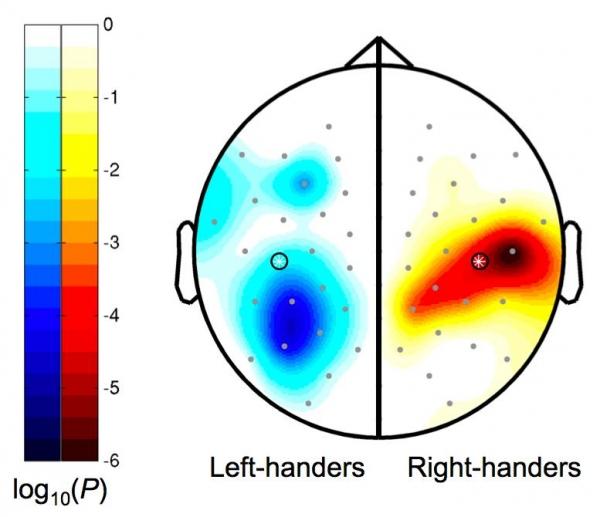In righties and lefties emotions originate in different hemispheres of the brain
 Bashny.Net
Bashny.Net

The way we use our hands, can determine how emotions are organized in our brains - according to a recent study published in PLoS ONE psychologists Geoffrey Brookshire and Daniel Kasasento of the New School for Social Research in New York.
Incentive to action, this desire to approach or withdraw from physical and social incentives, and this is the basis of human emotions. For decades, scientists believed that motivation originates mainly in the left hemisphere of the brain, and subsides in the right hemisphere. Brookshire and Kasasento, with his study challenge this standard theory, showing that the established structure of brain activity detected in dozens of studies in right-handers, completely contradict research in left-handers.
The study used electroencephalography (EEG) to compare activity in the right and left hemispheres of the brain in subjects during rest. After measuring their brain waves, the participants underwent measurement of their level of motivation, one of the main aspects of our personality. In right-handers stronger motivation arousal was associated with greater activity in the left hemisphere of the brain that is fully compatible with previous studies. However, the left-hander showed completely opposite result: excitation motivation was associated with greater activity in the right hemisphere.
The new connection between motor activities and emotions
Most of the cognitive functions of the brain is not fully connected with the direct action. This example is processed primarily in the left hemisphere of the brain most right- and left-handers. However, these results were not unexpected.
"We expected a" castling "in the cerebral hemispheres, because we noticed that people tend to use a variety of hands to perform any action related to the prevention of anything," says Kasasento. Direct incentive to action is often performed dominant hand, and action to prevent, on the contrary, is not dominant.
"The motivation for action is calculated hemisphere, which controls the right hand in right-handers, and the hemisphere that controls the left hand in left-handers," says Kasasento. "We do not think that this is - a mere coincidence. Neural networks for emotional motives may be operably linked to networks that govern the actions of the hands, and vice versa - the emotions can be constructed on the neural networks of motor actions during the evolution of or during the developmental man ».
The authors suggest that these data show a correlation between emotional motivation and motor activities, and that further research is needed to establish their causal relationship.
Tags
See also
8 people who have made this world a better place
How to relieve anxiety? 8 facts you need to know the feeling of anxiety
What are left and right hemisphere of our brain
The brain and adolescent behaviour
Three vegetable blocking cancer!
Nikola Tesla
Optical illusion - the impression of a visible object or phenomenon
The story of billionaire
Interesting facts about the world-wide network

















